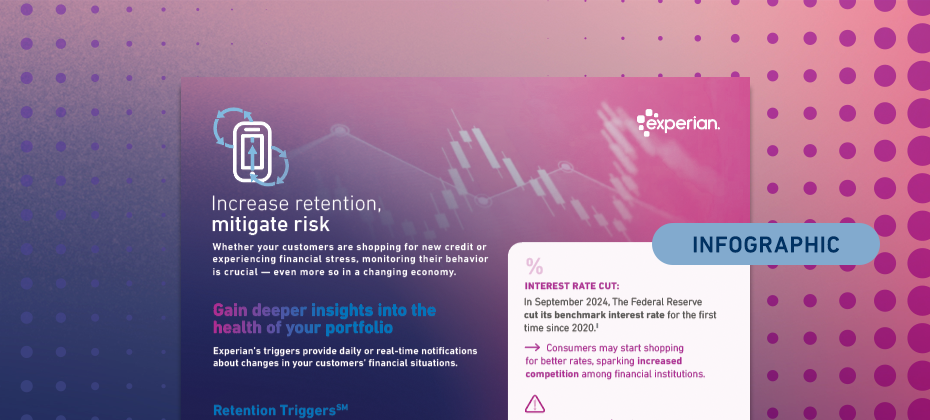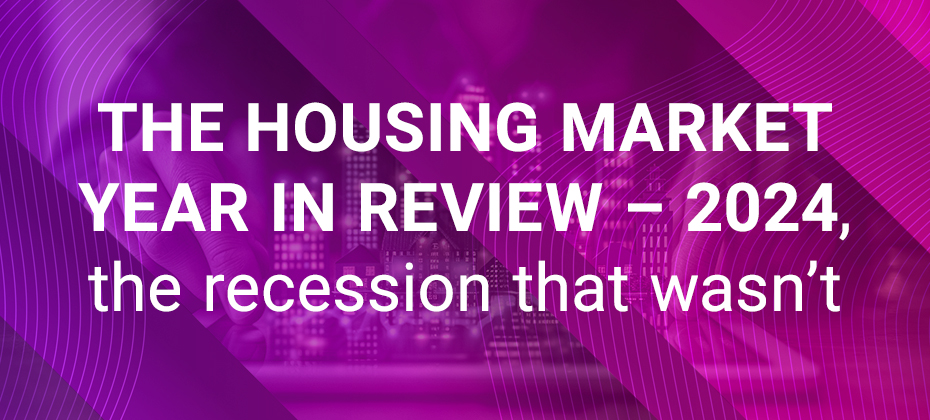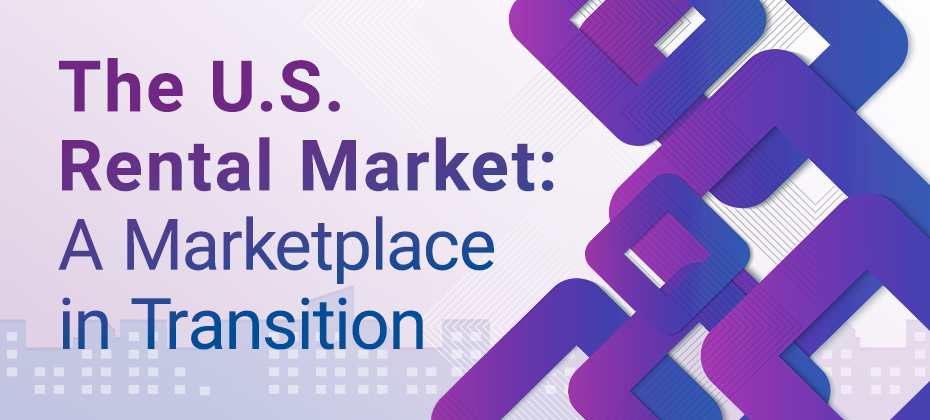Industries

In today's fast-paced financial landscape, consumer expectations are higher than ever. Financial institutions must rethink their strategies to stay ahead of rising interest rates, intense competition, and the need to innovate constantly. To thrive, it’s not just about offering the best rates—it's about building deeper, more meaningful relationships with customers and delivering personalized, proactive value that drives loyalty and growth.

With the National Automobile Dealers Association (NADA) Show set to kickoff later this week, it seemed fitting to explore how the shifting dynamics of the used vehicle market might impact dealers and buyers over the coming year. Shedding light on some of the registration and finance trends, as well as purchasing behaviors, can help dealers and manufacturers stay ahead of the curve. And just like that, the Special Report: Automotive Consumer Trends Report was born. As I was sifting through the data, one of the trends that stood out to me was the neck-and-neck race between Millennials and Gen X for supremacy in the used vehicle market. Five years ago, in 2019, Millennials were responsible for 33.3% of used retail registrations, followed by Gen X (29.5%) and Baby Boomers (26.8%). Since then, Baby Boomers have gradually fallen off, and Gen X continues to close the already minuscule gap. Through October 2024, Millennials accounted for 31.6%, while Gen X accounted for 30.4%. But trends can turn on a dime if the last year offers any indication. Over the last rolling 12 months (October 2023-October 2024), Gen X (31.4%) accounted for the majority of used vehicle registrations compared to Millennials (30.9%). Of course, the data is still close, and what 2025 holds is anyone’s guess, but understanding even the smallest changes in market share and consumer purchasing behaviors can help dealers and manufacturers adapt and navigate the road ahead. Although there are similarities between Millennials and Gen X, there are drastic differences, including motivations and preferences. Dealers and manufacturers should engage them on a generational level. What are they buying? Some of the data might not come as a surprise but it’s a good reminder that consumers are in different phases of life, meaning priorities change. Over the last rolling 12 months, Millennials over-indexed on used vans, accounting for more than one-third of registrations. Meanwhile, Gen X over-indexed on used trucks, making up nearly one-third of registrations, and Gen Z over-indexed on cars (accounting for 17.1% of used car registrations compared to 14.6% of overall used vehicle registrations). This isn’t surprising. Many Millennials have young families and may need extra space and functionality, while Gen Xers might prefer the versatility of the pickup truck—the ability to use it for work and personal use. On the other hand, Gen Zers are still early in their careers and gravitate towards the affordability and efficiency of smaller cars. Interestingly, although used electric vehicles only make up a small portion of used retail registrations (less than 1%), Millennials made up nearly 40% over the last rolling 12 months, followed by Gen X (32.2%) and Baby Boomers (15.8%). The market at a bird’s eye view Pulling back a bit on the used vehicle landscape, over the last rolling 12 months, CUVs/SUVs (38.9%) and cars (36.6%) accounted for the majority of used retail registrations. And nearly nine-in-ten used registrations were non-luxury vehicles. What’s more, ICE vehicles made up 88.5% of used retail registrations over the same period, while alternative-fuel vehicles (not including BEVs) made up 10.7% and electric vehicles made up 0.8%. At the finance level, we’re seeing the market shift ever so slightly. Since the beginning of the pandemic, one of the constant narratives in the industry has been the rising cost of owning a vehicle, both new and used. And while the average loan amount for a used non-luxury vehicle has gone up over the past five years, we’re seeing a gradual decline since 2022. In 2019, the average loan amount was $22,636 and spiked $29,983 in 2022. In 2024, the average loan amount reached $28,895. Much of the decline in average loan amounts can be attributed to the resurgence of new vehicle inventory, which has resulted in lower used values. With new leasing climbing over the past several quarters, we may see more late-model used inventory hit the market in the next few years, which will most certainly impact used financing. The used market moving forward Relying on historical data and trends can help dealers and manufacturers prepare and navigate the road ahead. Used vehicles will always fit the need for shoppers looking for their next vehicle; understanding some market trends will help ensure dealers and manufacturers can be at the forefront of helping those shoppers. For more information on the Special Report: Automotive Consumer Trends Report, visit Experian booth #627 at the NADA Show in New Orleans, January 23-26.

The automotive industry is constantly changing. Shifting consumer demands and preferences, as well as dynamic economic factors, make the need for data-driven insights more important than ever. As we head into the National Automobile Dealers Association (NADA) Show this week, we wanted to explore some of the trends in the used vehicle market in our Special Report: State of the Automotive Finance Market Report. Packed with valuable insights and the latest trends, we’ll take a deep dive into the multi-faceted used vehicle market and better understand how consumers are financing used vehicles. 9+ model years grow Although late-model vehicles tend to represent much of the used vehicle finance market, we were surprised by the gradual growth of 9+ model year (MY) vehicles. In 2019, 9+MY vehicles accounted for 26.6% of the used vehicle sales. Since then, we’ve seen year-over-year growth, culminating with 9+MY vehicles making up a little more than 30% of used vehicle sales in 2024. Perhaps more interesting though, is who is financing these vehicles. Five years ago, prime and super prime borrowers represented 42.5% of 9+MY vehicles, however, in 2024, those consumers accounted for nearly 54% of 9+MY originations. Among the more popular 9+MY segments, CUVs and SUVs comprised 36.9% of sales in 2024, up from 35.2% in 2023, while cars went from 44.3% to 42.9% year-over-year and pickup trucks decreased from 15.9% to 15.6%. 2024 highlights by used vehicle age group To get a better sense of the overall used market, the segments were broken down into three age groups—9+MY, 4-8MY, and current +3MY—and to no surprise, the finance attributes vary widely. While we’ve seen the return of new vehicle inventory drive used vehicle values lower, it could be a sign that consumers are continuing to seek out affordable options that fit their lifestyle. In fact, the average loan amount for a 9+MY vehicle was $19,376 in 2024, compared to $24,198 for a vehicle between 4-8 years old and $32,381 for +3MY vehicle. Plus, more than 55% of 9+MY vehicles have monthly payments under $400. That’s not an insignificant number for people shopping with the monthly payment in mind. In 2024, the average monthly payment for a used vehicle that falls under current+3MY was $608. Meanwhile, 4-8MY vehicles came in at an average monthly payment of $498, and 9+MY vehicles had a $431 monthly payment. Taking a deeper dive into average loan amounts based on specific vehicle types—as of 2024, current +3MY cars came in at $28,721, followed by CUVs/SUVs ($31,589) and pickup trucks ($40,618). As for 4-8MY vehicles, cars came in with a loan amount of $22,013, CUVs/SUVs were at $23,133, and pickup trucks at $31,114. Used 9+MY cars had a loan amount of $19,506, CUVs/SUVs came in at $17,350, and pickup trucks at $22,369. With interest rates remaining top of mind for most consumers as we’ve seen them increase in recent years, understanding the growth from 2019-2024 can give a holistic picture of how the market has shifted over time. For instance, the average interest rate for a used current+3MY vehicle was 8.0% in 2019 and grew to 10.2% in 2024, the average rate for a 4-8MY vehicle went from 10.3% to 12.9%, and the average rate for a 9+MY vehicle increased from 11.4% to 13.8% in the same time frame. Looking ahead to the used vehicle market It’s important for automotive professionals to understand and leverage the data of the used market as it can provide valuable insights into trending consumer behavior and pricing patterns. While we don’t exactly know where the market will stand in a few years—adapting strategies based on historical data and anticipating shifts can help professionals better prepare for both challenges and opportunities in the future. As used vehicles remain a staple piece of the automotive industry, making informed decisions and optimizing inventory management will ensure agility as the market continues to shift. For more information, visit us at the Experian booth (#627) during the NADA Show in New Orleans from January 23-26.

In today's evolving financial landscape and with delinquincies rising, debt collection remains a critical function for financial institutions. However, traditional methods often fall short in efficiency and customer satisfaction. Enter artificial intelligence (AI), a game-changer poised to revolutionize the debt collection industry. This blog post explores the benefits and uses of AI in debt collection, shedding light on how financial institutions can leverage this technology to enhance their strategies. Understanding AI in debt collection Artificial intelligence – which encompasses machine learning, natural language processing, and other advanced technologies – is transforming various industries, including debt collection. AI in debt collection involves using these technologies to automate and optimize processes, making them more efficient and effective. Examples of AI technologies in debt collection include chatbots, predictive analytics, and automated communication systems. Uses Predictive analytics Predictive debt collection analytics is a powerful tool in AI collections. By analyzing patterns and trends in debtor behavior, AI can forecast the likelihood of repayment. This information allows financial institutions to tailor their collection strategies to individual debtors, improving the chances of successful recovery. Chatbots and virtual assistants AI-powered chatbots and virtual assistants handle routine customer interactions, providing instant responses to common queries. These tools can escalate complex issues to human agents when necessary, ensuring that customers receive the appropriate level of support. By automating routine tasks, chatbots free up human agents to focus on more complex cases. Automated communication AI can automate communication with debtors, sending payment reminders and notifications through various channels such as email, SMS, and phone calls. These messages can be customized based on debtor profiles, ensuring that communication is personalized and effective. Automated communication helps maintain consistent contact with debtors, increasing the likelihood of timely payments. Benefits Improved operational efficiency One of the most significant advantages of AI in debt collection is improved operational efficiency. AI can automate repetitive tasks such as sending payment reminders and processing payments, reducing the need for manual intervention. This automation speeds up the process, reduces costs, and minimizes human errors, ensuring more accurate and timely collections. Enhanced customer experience AI-driven chatbots and virtual assistants can provide personalized communication, enhancing the customer experience. These AI tools are available 24/7, allowing customers to get instant responses to their queries at any time. By offering a seamless and responsive service, financial institutions can improve customer satisfaction and engagement strategies. Better decision making AI collections leverage predictive analytics to assess debtor risk and provide data-driven insights. This information enables financial institutions to develop more effective collection strategies and prioritize high-risk accounts. By making informed decisions based on predictive models, institutions can optimize collections processes and increase their chances of successful debt recovery. Cost savings Automation through AI can lead to significant cost savings. Financial institutions can achieve higher profitability by reducing the need for human intervention and lowering operational costs. Additionally, increased recovery rates due to better cure strategies contribute to overall cost efficiency. Challenges and considerations While AI offers numerous benefits, there are challenges and considerations to keep in mind. Data privacy and security are paramount, as financial institutions must ensure compliance with regulations such as General Data Protection Regulation (GDPR) and California Consumer Privacy Act (CCPA). Balancing automation with the need for a human touch is also crucial, as some customers may prefer interacting with human agents. Additionally, addressing potential biases in AI algorithms is essential to ensure fair and equitable treatment of all debtors. Future Trends in AI and debt collection The future of AI in debt collection looks promising, with emerging technologies poised to make a significant impact. Integration of AI with other technologies such as blockchain and the Internet of Things (IoT) could further enhance the efficiency and security of debt collection processes. As AI continues to evolve, financial institutions must stay abreast of these trends to remain competitive and effective in their collection strategies. Our debt management and collection solutions With more than 25 years of experience and a comprehensive suite of collection products, our enhanced decisioning, improved processes, and account prioritization can enable your organization to move toward a customer-centric approach that helps reduce losses and control costs. AI in debt collection offers a myriad of benefits, from improved efficiency and enhanced customer experience to better decision-making and cost savings. By leveraging AI technologies such as predictive analytics, chatbots, and automated communication, financial institutions can optimize their debt collection strategies and achieve higher recovery rates. As the industry continues to evolve, embracing AI will be crucial for financial institutions looking to stay ahead of the curve. Click below to learn more about how we can help your organization optimize your debt collection strategies to lose less and recover more. Learn more Watch our webinar on-demand This article includes content created by an AI language model and is intended to provide general information.

With the rise of digital interactions, identity fraud has become an unassuming threat that impacts individuals, businesses, and institutions worldwide. According to the Federal Trade Commission (FTC), 5.4 million consumer reports regarding fraud and consumer protection were filed in 2023. Identity fraud, which is characterized as when an individual's personal information is stolen and used without their consent for fraudulent purposes, has devastating consequences for consumers, including financial losses, damaged credit scores, legal issues, and emotional distress. Financial institutions face damaging consequences beyond financial losses, including reputational damage, operational disruption, and regulatory scrutiny. As technology advances, so do fraudsters' tactics, making it increasingly challenging to detect and prevent identity-related crimes. So, what are financial institutions to do? Industry-leading institutions apply a layered approach to solving fraud that starts with a fraud risk assessment. What is a fraud risk assessment? When opening a new account, banks typically conduct a fraud risk assessment to verify the identity of the individual or entity applying for the account and to assess the likelihood of fraudulent activity. Banks also assess the applicant's credit history, financial background, and transaction patterns to identify red flags or suspicious activity. Advanced fraud detection tools and technologies are employed to monitor account opening activities in real-time and detect signs of fraudulent behavior. This assessment is crucial for ensuring compliance with regulatory requirements, mitigating the risk of financial loss, and safeguarding against identity theft. Understanding the importance of fraud risk assessments A fraud risk assessment is crucial for banks during account opening as it helps verify the identity of applicants and mitigate the risk of fraudulent activity. By assessing the likelihood and potential impact of identity fraud, banks can implement measures to protect customers' assets and protect against losses in their portfolio. Additionally, conducting thorough risk assessments enables banks to comply with regulatory requirements, which mandate the verification of customer identities to prevent money laundering and terrorist financing. By adhering to these regulations and implementing effective fraud detection measures, banks can enhance trust and confidence among customers, regulators, and stakeholders, reinforcing the integrity and stability of the financial system. 10 tools to consider when building an effective fraud risk assessment Several key factors should be carefully considered in an identity fraud risk assessment to ensure thorough evaluation and effective mitigation of identity fraud risks. Financial institutions should consider emerging threats and trends such as synthetic identity fraud, account takeover attacks, and social engineering scams when conducting a risk assessment. By staying abreast of evolving tactics used by fraudsters, organizations can proactively adapt their fraud prevention strategies and controls. Here are 10 tools that can help catch red flags for fraud prevention: Identity verification: Identity verification is the first line of defense against identity theft, account takeover, and other fraudulent activities. By verifying the identities of individuals before granting access to services or accounts, organizations can ensure that only legitimate users are granted access. Effective identity verification methods, such as biometric authentication, document verification, and knowledge-based authentication, help mitigate the risk of unauthorized access and fraudulent transactions. Implementing robust identity verification measures protects organizations from financial losses and reputational damage and enhances trust and confidence among customers and stakeholders. Device intelligence: Device intelligence provides insights into the devices used in online transactions, enabling organizations to identify and mitigate fraudulent activities. Organizations can detect suspicious behavior indicative of fraudulent activity by analyzing device-related data such as IP addresses, geolocation, device fingerprints, and behavioral patterns. Device intelligence allows organizations to differentiate between legitimate users and fraudsters, enabling them to implement appropriate security measures, such as device authentication or transaction monitoring. Phone data: Phone and Mobile Network Operator (MNO) data offers valuable insights into the mobile devices and phone numbers used in transactions. By analyzing MNO data such as subscriber information, call records, and location data, organizations can verify the authenticity of users and detect suspicious activities. MNO data enables organizations to confirm the legitimacy of phone numbers, detect SIM swapping or account takeover attempts, and identify fraudulent transactions. Leveraging MNO data allows organizations to strengthen their fraud prevention measures, enhance customer authentication processes, and effectively mitigate the risk of fraudulent activities in an increasingly mobile-driven environment. Email attributes: Email addresses serve as a primary identifier and communication channel for users in digital transactions. Organizations can authenticate user identities, confirm account ownership, and detect suspicious activities such as phishing attempts or identity theft by verifying email addresses. Analyzing email addresses enables organizations to identify patterns of fraudulent behavior, block unauthorized access attempts, and enhance security measures. Furthermore, email address validation helps prevent fraudulent transactions, safeguard sensitive information, and protect against financial losses and reputational damage. Leveraging email addresses as part of fraud prevention strategies enhances trustworthiness in digital interactions. Address verification: Address verification provides essential information for authenticating user identities and detecting suspicious activities. By verifying addresses, organizations can confirm the legitimacy of user accounts, prevent identity theft, and detect fraudulent transactions. Address validation enables organizations to ensure that the provided address matches the user's identity and reduces the risk of fraudulent activities such as account takeover or shipping fraud. Behavioral analytics: Behavioral analytics enables organizations to detect anomalies and patterns indicative of fraudulent activity. By analyzing user behavior, such as transaction history, navigation patterns, and interaction frequency, organizations can identify deviations from normal behavior and flag suspicious activities for further investigation. Behavioral analytics allows organizations to create profiles of typical user behavior and detect deviations that may signal fraud, such as unusual login times or transaction amounts. Consortia: Consortia facilitate collaboration and information sharing among organizations to combat fraudulent activities collectively. By joining forces through consortia, organizations can leverage shared data, insights, and resources to more effectively identify emerging fraud trends, patterns, and threats. Consortia enables participating organizations to benefit from a broader and more comprehensive view of fraudulent activities, enhancing their ability to detect and prevent fraud. Risk engines: Risk engines enable real-time analysis of transaction data and user behavior to detect and mitigate fraudulent activities. By leveraging advanced algorithms and machine learning techniques, risk engines assess the risk associated with each transaction and user interaction, flagging suspicious activities for further investigation or intervention. Risk engines help organizations identify anomalies, patterns, and trends indicative of fraudulent behavior, allowing for timely detection and prevention of fraud. Additionally, risk engines can adapt and evolve over time to stay ahead of emerging threats, enhancing their effectiveness in mitigating fraud. Orchestration streamlines and coordinates the various components of a fraud detection and prevention strategy. By orchestrating different fraud prevention tools, technologies, and processes, organizations can optimize their efforts to combat fraud effectively. Orchestration allows for seamless integration and automation of workflows, enabling real-time data analysis and rapid response to emerging threats. Step-up authentication: Step-up authentication provides an additional layer of security to verify users' identities during high-risk transactions or suspicious activities. By requiring users to provide additional credentials or undergo further authentication steps, such as biometric verification or one-time passcodes, organizations can mitigate the risk of unauthorized access and fraudulent transactions. Step-up authentication allows organizations to dynamically adjust security measures based on the perceived risk level, ensuring that stronger authentication methods are employed when necessary. By layering these tools effectively businesses remove gaps that fraudsters would typically exploit. Learn more

Electric vehicles (EVs) are the topic of conversation in the automotive industry, but we’re continuing to see another fuel type pick up speed. With consumer demand shifting and drivers exploring more fuel-efficient options, the automotive market is leaning back into hybrids. In fact, new retail hybrid registrations grew to 11.5% through Q3 2024, from 9.5% through Q3 2023, according to Experian’s Automotive Market Trends Report: Q3 2024. Meanwhile, EVs increased from 7.7% to 8.2% year-over-year and gasoline vehicles declined to 70.4% this year, from 72.7% last year. Despite EVs gaining notable attention over recent years, some consumers may be factoring in the benefits of opting for a hybrid, such as the convenience of driving a longer distance without facing challenges as charging stations remain limited. As more manufacturers adapt to consumer needs and roll out additional vehicles, data shows 9.1% of 2024 model year vehicles in operation were attributed to hybrids, while 6.2% of 2024 model years were EVs through Q3 2024. Having more models enter the market has shifted the hybrid and plug-in hybrid electric vehicle (PHEV) market share, with the Toyota Camry making up 12.5% of the market share this quarter, a notable increase from 2.4% last year. On the other hand, the Jeep Wrangler 4xe went from having 4.5% of market share last year to 2.4% through Q3 2024. With many consumers continuing to have some concerns around EVs such as range anxiety and charging times, they’re seeking a more practical solution for their daily driving needs. The balance of fuel options provides more convenience—making hybrids an appealing choice for those wanting an EV alternative. It’s important for manufacturers to stay ahead of the competitive market as it’s constantly evolving. Leveraging the most current data can provide solutions that address both feasibility and consumer preference. To learn more about vehicle market trends, view the full Automotive Market Trends Report: Q3 2024 presentation on demand.

Four capabilities to consider for improved coverage and customer experience. Identity verification during account opening is the foundation for building trust between consumers and businesses. Consumers expect a seamless and convenient experience, and with the ease and optionality of online banking, are willing to look for alternatives that offer less friction. According to Experian research, 92% of consumers feel it's important for the businesses they deal with online to identify or recognize them on a repeated basis accurately, but only 16% have high confidence that this is happening. The disconnect between consumers’ expectations for online identity verification and the digital experiences they encounter is leading to reduced satisfaction and increased abandonment during new account opening processes. According to recent research by Experian, 38% of consumers surveyed considered ending a new account opening mid-way through the process due to poor experience. In addition, the same research found that nearly one-fifth of consumers had moved their business elsewhere because of this. Amidst the quest for convenience lies a pressing concern: ensuring the integrity of accounts being opened and protecting against fraud. Businesses continue to experience increasing fraud losses, Juniper Research forecasts that merchant losses from online payment fraud will exceed $362 billion globally between 2023 and 2028, with losses of $91 billion alone in 2028. Identity verification serves as the first line of defense in protecting both financial institutions and consumers. By verifying the identities of individuals before granting them access to services, businesses can mitigate the risk of identity theft, account takeover, and other forms of fraud. Four capabilities to consider when building out an identity verification strategy Personally Identifiable Information (PII) dataComparing consumer input data to a comprehensive data set helps effectively validate the consumer without disrupting customer experience. Details like name, address, date of birth, and social security number provide valuable identity information to verify identities quickly and accurately. Identity graphUsing an identity graph leveraging advanced analytics and data linking techniques helps prevent synthetic IDs from getting through. By mapping relationships between identity attributes, you can easily identify patterns and connections within the data and detect anomalies or inaccuracies in the information provided. Alternative data“Thin file” consumers are often rejected due to a lack of traditional data. Using alternative data like phone ownership and email data helps not only verify that the identity is real but also improves coverage, so you are not rejecting good customers. Document verificationHaving a document verification provider that seamlessly integrates into your identity verification workflow is essential for robust identity verification. Validating good users early in the account opening process helps keep fraudsters out so good users are not subject to stringent identity checks later on during onboarding. Next steps A strong identity verification process builds trust by demonstrating a commitment to protecting and safeguarding consumer data. A proper identity verification workflow would minimize the impact of friction for consumers and help organizations manage fraud and regulatory compliance by examining specific business needs on a case-by-case basis. Identifying the right mix of capabilities through analytics and feedback while utilizing the best data reduces the cost of manual verification and helps onboard good customers faster. Learn more Research conducted in March 2024 by Experian in North America

Pickup trucks are a staple of the automotive industry. Their utility and versatility allow consumers to haul heavy loads or tow large trailers, making them ideal for blue-collar workers. At the same time, pickup trucks offer a sleek appearance that can be aesthetically appealing. And now, we’re seeing the next evolution of the pickup truck: EVs. According to Experian’s Automotive Consumer Trends Report: Q3 2024, of the 292.1 million vehicles in operation, more than 54 million were pickup trucks. Furthermore, 17.4% of new retail registrations this quarter were pickup trucks, while pickup trucks made up 19.2% of used retail registrations. Interestingly, we’re seeing more consumer demand for EV pickup trucks. Over the last 12 months, the Ford F-150 Lightening made up 42.2% of the EV pickup truck market share, closely followed by the Tesla Cybertruck at 37.9%. Rounding out the top five were the Rivian R1T (14.2%), GMC Hummer EV (4.8%) and Chevrolet Silverado EV (0.9%). Still room for the ICE pickup Although we’re beginning to see EV pickup trucks gain some prominence, the overwhelming majority of pickups on the road are gas-powered. In fact, over the last 12 months, 14.5% of new retail pickup truck registrations were attributed to the Chevrolet Silverado 1500, followed by the Ford-150 at 13.4% and the GMC Sierra 1500 (9.1%). Though, data found the preference flipped for the used side, with the Ford F-150 leading at 18.1% of retail pickup registrations and the Chevrolet Silverado 1500 at 13.9%, followed by the GMC Sierra 1500 (6.2%). With more consumers not only maintaining a keen interest in gasoline pickup trucks, but also moving into the EV space, the current data can be leveraged in more ways than one as professionals diversify their sales strategies while optimizing dealership inventory. To learn more about pickup truck insights, view the full Automotive Consumer Trends Report: Q3 2024 presentation or The Trade Desk Brochure.

Whether consumers are shopping for new credit or experiencing financial stress, monitoring their behavior is crucial — even more so in an ever-changing economy. Our latest infographic explores economic trends impacting consumers’ financial behaviors and how Experian’s Risk and Retention TriggersSM enable lenders to detect early signs of risk or churn. Key highlights include: Credit card balances climbed to $1.17 trillion in Q3 2024. As prices of goods and services remain elevated, consumers may continue to experience financial stress, potentially leading to higher delinquency rates. Increasing customer retention rates by 5% can boost profits by 25% to 95%. View the infographic to learn how Risk and Retention Triggers can help you advance your portfolio management strategy. Access infographic

In 2024, the housing market defied recession fears, with mortgage and home equity growth driven by briefly lower interest rates, strong equity positions, generally positive economic indicators, and stock market appreciation. This performance is notable because, in 2023, economists’ favorite hobby was predicting a recession in 2024. Following a period of elevated inflation, driven largely by loose monetary policy, expansionary fiscal policy, and supply chain disruptions brought on by COVID, economists were certain that the US economy would shrink. However, the economy continued outperforming expectations, even as unemployment rose modestly (Figure 2) and inflation cooled (Figure 3). Source: FRED (Figure 1, Figure 2, Figure 3). So, a good economy is good for the mortgage and home equity markets, right? Generally speaking, this statement was true. As monitored by Experian’s credit database, mortgage originations increased by approximately thirty percent year over year as of November 2024 (Figure 4), and Q3 ’24 pre-tax profit for Independent Mortgage Banks (IMBs) averaged $701 per loan.1 So, business in home lending is good — certainly better than it was during the period when the Fed was raising rates, origination volumes shrank as opposed to grew, and IMB profit per loan turned negative. Source: Experian Ascend Insights Dashboard. What constituted this growth in mortgage lending? As we all know, the Fed has lowered interest rates by 100bps since they started reducing rates in September. The market had priced in the September cut weeks prior to the actual announcement (Figure 5), and the market enjoyed a spike in refinance volume as a result (Figure 6). However, in the lead-up to and following the US presidential election, interest rates spiked back up due to the market’s expectations around future economic activity, which will dampen pressure on refinance volumes even after the recent additional rate drop. The impact of further rate drops on mortgage rates is unclear, and refinance volume still constitutes only around three percent of overall origination volume. Source: Figure 5, Figure 6 (Experian Ascend Insights Dashboard). The shift to a purchase-driven housing market What does this all mean? Our view is that pockets of refinance volume (rate and term, VA, FHA, cashout) are available to those lenders with a sophisticated targeting strategy. However, the data also very clearly indicates that this market is still very much a purchase market in terms of opportunity for originations growth. This position should not surprise long-time mortgage lenders, given that purchase volume has always constituted a significant majority of origination volume. However, this market is a different purchase market than lenders may be used to. This purchase market is different because of unprecedented statistics about the housing market itself. The average age of a first-time homebuyer recently reached a record high of 38. The average age of overall homebuyers in November of this year similarly jumped to a new record high of 56, with homes being “wildly unaffordable for young people.” Twenty-six percent of home purchases are all-cash, another record high, and homeowners have an aggregate net equity position of $17.6 trillion, fueling those all-cash purchases. The market is expensive both from an interest rate perspective and a housing price-level perspective, and those trends are driving who is buying homes and how they are buying them.2 Opportunities for lenders in 2025 What do these housing market dynamics mean for lenders? To begin with, lenders should not spend money marketing mortgages to consumers in their 50s and 60s with large equity positions. These consumers are likely to be in the 26 percent all-cash buyer cohort, and that money will be wasted since mortgages are no longer so cheap that even cash-rich buyers would take them. Further, this equity-rich generation has children, and nearly 40% of those children borrow from the bank of mom and dad to purchase their first home. Since roughly a quarter (albeit a shrinking quarter) of homebuyers are first-time homebuyers, and since 40% of those rely on help from parents to facilitate that purchase, it may make sense for lenders to identify those consumers with 1) children and 2) significant equity positions and to offer products like cash-out refinances or home equity loans/lines to help facilitate those first-time purchases. Data is critical to executing these kinds of novel marketing strategies. It is one thing to develop these marketing and growth strategies in principle and another entirely to efficiently find the consumers that meet the criteria and give them a compelling offer. Consider home equity originations. As Figure 7 illustrates, HELOC originations are strong but have completely stalled from a growth rate perspective. As Figure 8 illustrates, this is despite the market's continued growth in direct mail marketing investment. Although HELOC origination volumes are a fraction of mortgage—around $27b per month for HELOC versus $182b per month for mortgage—there are significantly more home equity direct mail offers being sent per month (39 million) for home equity products as there are for mortgage (31 million) as of October ’24.3 This all means that although many lenders have wised up to the home equity opportunity to the point of saturating the market with offers, few have successfully leveraged targeting data and analytics to craft sufficiently compelling offers to those consumers to convert those marketing leads into booked loans. Source: Figure 7 (Experian Ascend Insights Dashboard), Figure 8 (Mintel). Adapting to a resilient housing market In summary, the housing market, comprised of mortgage and home equity products, has experienced persistent growth over the past year. Many who are reading this note will have benefitted from that growth. However, as we have identified, in many respects housing market growth has 1) been concentrated to some key borrower demographics and 2) many lenders are investing in marketing campaigns that are not efficiently reaching or convincing that key housing demographic to book loans, whether it be a home equity or mortgage product. As such, as we move into 2025, Experian advises our clients to focus on the following three themes to ensure they benefit from this trend of growth into the new year: Ensure you effectively differentiate your marketing targeting, collateral, and offers for the various demographics in the market. Ensure your origination experiences for mortgage and home equity products are modern and efficient. Lenders who force all borrowers through a painful, manual legacy process will waste marketing dollars and experience pipeline fallout. Although the market is growing, other lenders are coming for your current customers. They could be coming for purchase activity, refinance opportunities, or they may be using home equity products to encroach on your existing mortgage relationship. As such, capitalizing on growth in 2025 is not merely about gaining new customers; it is also about retaining your existing book of business using high-quality data and analytics. Learn more 1 Although December numbers are available for year-over-year comparison, we excluded them due to the holiday period's strong seasonality patterns. 2 The Case-Shiller index recently topped out at record levels. 3 Mintel/Comperemedia data.

Transformations in today’s U.S. rental market reflect changing economic and market forces. These dynamic times present challenges and opportunities for property managers and landlords seeking more stability and consistency in their property occupancies. The real estate industry responded positively to the Federal Reserve's recent announcement to cut interest rates by a quarter percentage point, marking a favorable shift from previous actions that kept rates steady. However, uncertainty lingers about the extent and pace of changes in the residential real estate market, including the rental and buying sectors. Experts remain optimistic, predicting improvements as the market heads into next year's busy season. Landlords and property managers looking to attract more stable renters need to understand macro- and micro-market trends, renter demographics and preferences, and other information impacting their specific locales. Experian Housing published its 2024 report on the U.S. rental market, which provides data-driven insights into the current rental landscape. Experts examined today’s renter population, current market trends, the state of housing development, and the market’s future. Who is today’s renter? Today’s renter is still navigating financial constraints and potential marketplace affordability challenges. While location-specific information does influence the affordability of renting versus buying a home, on average, affordability remains an important factor guiding consumer decision-making. Our latest rental report highlights a notable shift in the rental market, with a growing number of younger renters and a decline in the average annual income among renters. According to Experian’s RentBureau®1, over 30% of renters are Generation Z—the youngest adult demographic. Expanding this to include individuals under 34 years old, younger renters now represent over half of all renters in the United States. Experian’s research highlights a shift in rental spending trends, showing the average income for renters now at $52,600. RentBureau data underscores the evolving financial landscape, with rent-to-income (RTI) ratios reflecting a growing commitment to housing. On average, individuals allocate 44.1% of their income to rent, while low-to-moderate-income households dedicate 52.5%. These figures exceed the traditional guideline of keeping rent within 30% of gross monthly income, underscoring the significant economic pressures faced by renters, particularly those with low-to-moderate incomes, as they navigate rising housing costs and limited affordability in the current market. This reality highlights the urgent need for broader systemic solutions to address housing availability and affordability challenges. What is happening in the rental market? Rental market trends reflect several factors, including changes in renter demographics, interest rates, housing supply and demand, and the economy. Overall, vacancy rates have stayed relatively low, which has resulted in rising rent prices, although there are signs of flattening. With fewer housing options available, many renters stay put for longer, which also contributes to availability and affordability. More renters, over 50% of all renters (a 10% increase over May 2023), are paying $1,500 or more in monthly rent, and the nationwide average rent stands at $1,713. A regional look offers greater specific insights for landlords and property managers, which is critical for truly understanding the marketplace. In 2024, 43 of 50 states have RTI ratios above the suggested guideline of 30%. California has the highest median RTI at just over 46%, followed by Massachusetts, Florida, Washington, and New Jersey. Other states facing increasing RTI ratios include Georgia, North Carolina, Colorado, Texas, and Nevada. These high ratios negatively affect affordability. At the same time, Experian Housing research indicates that over 92% of renters hold a single lease over two years. Data also shows 6.7% of renters with two leases in 24 months and others moving three or more times in this timeframe. Older generations, surprisingly, are moving more now than in recent years. Where is development headed? High mortgage rates are constraining housing development, especially for affordable entry-level homes. Roughly 50% fewer starter homes are being built, and multifamily new construction also faces constraints. With that said, multi-family housing units already under construction are coming to market. These units are generally high-end, contributing to increased rental prices. The supply coming to the market is higher-priced due to greater construction costs across the board. Contributors to the rising costs include builds in pricier metropolitan areas as well as features and modern amenities sought after by younger renters. The U.S. Census Bureau reports a slight uptick in new home construction since July 2023. How is the future looking? The U.S. economy is expected to remain stable, which should benefit renters and landlords alike. The outlook for the rental market in 2024 and 2025 remains optimistic with inflation down and the Fed rate cut, but many other factors come into play, specifically, overall economic health and the state of the employment market. For renters, the best tact is to set goals to improve their overall credit profiles and opportunities in the housing market. Individuals benefit from rent reporting. Experian RentBureau helps renters build credit profiles and open the best opportunities for the rental market and moving to the first-time homebuyer market. With rental housing still in high demand, property managers and landlords should focus on tenant screening, rent reporting, and fraud prevention as part of their risk management strategies. Focusing on these areas will increase the chances of finding quality, longer-term tenants. To learn more about the state of the U.S. rental market, download Experian Housing’s 2024 rental report. Access report 1 RentBureau® is the largest rental payment database that contains more than 36 million renter profiles. While RentBureau doesn’t represent the total U.S. rental market population, internal studies reveal RentBureau data aligns closely to historical U.S. Census data studies, which provides confidence in the deeper understandings aggregated in the report.

In today’s digital landscape, where data breaches and cyberattacks are rampant, businesses face increasing security challenges. One of the most prevalent threats is credential stuffing—a cyberattack in which malicious actors use stolen username and password combinations to gain unauthorized access to user accounts. As more personal and financial data gets leaked or sold on the dark web, these attacks become more sophisticated, and the consequences for businesses and consumers alike can be devastating.But there are ways to proactively fight credential stuffing attacks and protect your organization and customers. Solutions like our identity protection services and behavioral analytics capabilities powered by NeuroID, a part of Experian, are helping businesses prevent fraud and ensure a safer user experience. What is credential stuffing? Credential stuffing is based on the simple premise that many people reuse the same login credentials across multiple sites and platforms. Once cybercriminals can access a data breach, they can try these stolen usernames and passwords across many other sites, hoping that users have reused the same credentials elsewhere. This form of attack is highly automated, leveraging botnets to test vast numbers of combinations in a short amount of time. If an attacker succeeds, they can steal sensitive information, access financial accounts, or carry out fraudulent activities. While these attacks are not new, they have become more effective with the proliferation of stolen data from breaches and the increased use of automated tools. Traditional security methods—such as requiring complex passwords or multi-factor authentication (MFA)—are useful but not enough to prevent credential stuffing fully. How we can help protect against credential stuffing We offer comprehensive fraud prevention tools and multi-factor authentication solutions to help you identify and mitigate credential stuffing threats. We use advanced identity verification and fraud detection technology to help businesses assess and authenticate user identities in real-time. Our platform integrates with existing authentication and risk management solutions to provide layered protection against credential stuffing, phishing attacks, and other forms of identity-based fraud. Another key element in our offering is behavioral analytics, which goes beyond traditional methods of fraud detection by focusing on users' data entry patterns and interactions. NeuroID and Experian partner to combat credential stuffing We recently acquired NeuroID, a company specializing in behavioral analytics for fraud detection, to take the Experian digital identity and fraud platform to the next level. Advanced behavioral analytics is a game-changer for preventing credential-stuffing attacks. While biometrics track characteristics, behavioral analytics track distinct actions. For example, with behavioral analytics, every time a person inputs information, clicks in a box, edits a field, and even hovers over something before clicking on it or adding the information to it, those actions are tracked. However, unlike biometrics, this data isn’t used to connect to a single identity. Instead, it’s information businesses can use to learn more about the experience and the intentions of someone on the site. NeuroID and Experian’s paired fraud detection capabilities offer several distinct advantages in preventing credential stuffing attacks: Real-time threat detection: Analyze thousands of behavioral signals in real-time to detect user behavior that suggests bots, fraud rings, credential stuffing attempts, or any number of other cybercriminal attack strategies. Fraud risk scoring: Based on behavioral patterns, assign a fraud risk score to each user session. High-risk sessions can trigger additional authentication steps, such as CAPTCHA or step-up authentication, helping to stop credential stuffing before it occurs. Invisible to the user: Unlike traditional authentication methods, behavioral analytics work seamlessly in the background. Users do not need to take extra steps—such as answering additional security questions or entering one-time passwords. Adaptive and self-learning: As users interact with your website or app, our system continuously adapts to their unique behavior patterns. Over time, the system becomes even more effective at distinguishing between legitimate and malicious users without collecting any personally identifiable information (PII). Why behavioral data is critical in combating credential stuffing Credential stuffing attacks rely on the ability to mimic legitimate login attempts using stolen credentials. Behavioral analytics, however, can spot the subtle differences between human and bot behavior, even if the attacker has the correct credentials. By integrating behavioral analytics, you can: Prevent automated attacks: Bots often interact with websites in unnatural ways—speeding through form fields, using erratic mouse movements, or attempting logins from unusual or spoofed geographic locations. Behavioral analytics can flag these behaviors before an account is compromised. Detect account takeovers early: If a legitimate user’s account is taken over, behavioral analytics can detect the change in interactions. By monitoring behavior, businesses can detect account takeover attempts much earlier than traditional methods. Lower false positive rates: Traditional fraud prevention tools often rely on rigid rule-based systems that can block legitimate users, especially if their login patterns slightly differ from the norm. On the other hand, behavioral analytics analyzes a user's real-time behavioral data without relying on traditional static data such as passwords or personal information. This minimizes unnecessary flags on legitimate customers (while still detecting suspicious activity). Improve customer experience: Since behavioral analytics is invisible to users and requires no extra friction (like answering security questions), the login and transaction verification process is much smoother. Customers are not inconvenienced, and businesses can reduce the risk of fraud without annoying their users. The future of credential stuffing prevention Credential stuffing is a growing threat in today’s interconnected world, but with the right solutions, businesses can significantly reduce the risk of these attacks. By integrating our fraud prevention technologies and behavioral analytics capabilities, you can stay ahead of the curve in securing user identities and preventing unauthorized access. The key benefits of combining traditional identity verification methods with behavioral analytics are higher detection rates, reduced friction for legitimate users, and an enhanced user experience overall. In an era of increasingly sophisticated cybercrime, using data-driven behavioral insights to detect user riskiness is no longer just a luxury—it’s a necessity. Learn more Watch webinar

The credit card market is rapidly evolving, driven by technological advancements, economic volatility, and changing consumer behaviors. Our new 2025 State of Credit Card Report provides an in-depth analysis of the credit card landscape and strategy considerations for financial institutions. Findings include: Credit card debt reached an all-time high of $1.17 trillion in Q3 2024. About 19 million U.S. households were considered underbanked in 2023. Bot-led fraud attacks doubled from January to June 2024. Read the full report for critical insights and strategies to navigate a shifting market. Access report

Scott Brown presents at Reuters Next “If I were to look into a crystal ball, traditional lending methodology and processes will not be replaced; they will be augmented by consumers connecting to banks via APIs, contributing the data they are comfortable with, and banks using that in conjunction with historical credit data to offer newer and better products they didn’t have access to before. The convergence of data, tech and AI leads to more financial inclusion and a more modern way of underwriting.”Scott Brown, Group President Financial Services, Experian North America Scott Brown, Group President of Financial Services for Experian North America, recently presented at Reuters Next discussing the transformative power of AI and data analytics in financial services. The session also covered the top challenges that financial institutions face today and how advances in technology are helping organizations overcome those challenges. This keynote presentation was a timely follow-up to Brown’s previous appearance at the Money20/20 conference in Las Vegas, where he revealed the details of Experian’s latest innovation in GenAI technology, Experian Assistant. Brown, in a conversation with TV writer, producer and anchor Del Irani, spoke about the ethical considerations of AI innovation, what the future of underwriting may look like, and how open banking can drive financial inclusion and have a significant positive impact on both businesses and consumers. “If you are extending a line of credit to a given consumer, how do you do so in a way that’s integrated into their everyday lives? That’s where the concept of embedded finance comes in, and how to embed finance into a consumer’s life, and not the other way around.”Scott Brown, Group President Financial Services, Experian North America By embedding finance into consumers’ lives, and not the other way around, organizations can develop better strategies to balance risk and generate more revenue. He also focused on three foundational steps to take advantage of the capabilities AI offers: data quality, transparency, and responsibility. Areas of focus for implementing AI As organizations rely on more sophisticated approaches, data quality inputs are more important than ever. Inaccurate data can lead to poor business decisions that can have a negative impact on organizations’ bottom line. Transparency is also a crucial component of implementing AI solutions. Companies should be able to explain how their models work and why the end results make sense while avoiding biases. Leveraging data with AI tools allows organizations to get a better view of the consumer, which is a goal of most banks and lending institutions. Using that consumer data responsibly is important for financial institutions to establish and maintain trust with the people who use their services. While incorporating AI solutions into everyday business operations is important for financial institutions to better serve their consumers and remain competitive in the industry, a lack of access to AI tools can prevent some organizations from doing so. A fragmented approach leads to higher costs, lower efficiency, and greater risk Until recently, financial institutions have had to rely on several different technology providers and tools to optimize customer experience and operational efficiency while protecting consumers from the risk of identity theft and fraud. This fragmented approach can result in increased costs for organizations and higher risk for consumers. Now, AI technology is solving this issue by integrating functionality into a single platform, such as the Experian Ascend Technology Platform™. This streamlined access to a comprehensive suite of tools can help accelerate time-to-value while also eliminating compliance risks. Full interview available now Brown’s full interview at Reuters Next reveals more details about how Experian is empowering organizations to better serve their consumers’ financial needs through AI innovation while also helping more than 100 million Americans who don’t have access to the mainstream credit ecosystem due to being credit invisible, unscoreable, or have a low credit score. Watch the full interview to learn more about how Experian is continuing to bring financial power to all through innovative technology. Watch the full interview now

Today’s fast-paced, digital-first hiring environment calls for a more comprehensive approach to pre-employment screening. With growing pressure on employers and HR teams to make swift, accurate, and secure hiring decisions, having access to the tools and data to enhance efficiency and security is more important than ever. By evolving beyond traditional screening methods, background screeners can better meet these needs and deliver added value to their clients. Fraud remains a significant challenge. In fact, fraud scams resulted in a staggering $485.6 billion in losses in 20231 — and hiring teams aren’t exempt from these risks. Fraudulent resumes, synthetic identities, and the risk of non-compliance with evolving regulations create a challenging landscape for pre-employment verifications. What if there was a way to make smarter, faster, and more secure hiring decisions? This article explores how background screeners can optimize pre-employment verification processes, reduce fraud risks, and ensure compliance — all while delivering a positive candidate experience. What is pre-employment screening? Employers conduct pre-employment screenings to thoroughly evaluate job candidates and make informed hiring decisions. It’s designed to verify key details about candidates, such as their identity, employment history, and references among others to assess their suitability for a role and ensure compliance with industry regulations. Enhancing traditional screening processes For decades, pre-employment background checks have been a cornerstone of the hiring process. While effective, many traditional methods face challenges in keeping up with the evolving demands of modern hiring. Delays in hiring: Background checks can oftentimes rely on manual processes, which could extend timelines leading to delays of days or even weeks. This not only slows down hiring cycles but can make it harder for employers to compete for top talent in a tight labor market. Errors and inaccuracies: Human errors, incomplete data, and inconsistencies across systems can lead to missed insights or red flags. Fraudulent activity: As hiring becomes increasingly digital, identity theft and synthetic identities present growing challenges to verifying candidate-provided data. Regulatory challenges: With regulations like the Equal Employment Opportunity Commission (EEOC) and Fair Credit Reporting Act (FCRA), companies must navigate complex compliance requirements to avoid legal and financial repercussions. 1 in 3 HR professionals report losing top candidates due to slow pre-employment screening processes.2 These challenges highlight the opportunity to build on existing screening practices with tools that enhance speed, provide actionable insights and prevent fraud. Adapting to the evolving fraud landscape Employment fraud is becoming increasingly sophisticated, fueled by trends like the rise of remote work and digital applications. In fact, the employment sector accounted for 45% of all false document submissions in 2023, making it the most targeted industry for fraud.3 From fake references and degrees to synthetic identities created using stolen personal information, the risks are higher than ever. Synthetic identity fraud: This form of fraud — where fake identities are created by combining real and fabricated data — makes up more than 80% of all new account fraud.4 Fake credentials: Many candidates falsify qualifications or work histories to enhance their chances of securing a role. Compliance risks: Failure to verify candidate information accurately can result in legal penalties, brand reputation damage, or internal security breaches. Modernizing pre-employment screening The good news? Experian offers advanced solutions that complement existing screening processes, empowering background screeners to deliver more efficient, secure and reliable results for their clients looking to higher faster, and with greater confidence. Gain a more holistic view of a candidate’s risk profile: Experian’s nationwide database contains files on more than 245 million credit-active consumers, providing the most current, accurate, and comprehensive information available in the industry. Conduct real-time identity verification: Leverage a range of identity verification solutions to authenticate and verify a candidate’s identity by accessing a breadth set of non-credit and credit data sources to create a robust social footprint that defines each consumer as unique individuals. Integrate advanced fraud detection: Powered by purpose-built analytics and machine learning algorithms, Experian’s fraud detection tools can detect synthetic identities, inconsistencies, and other red flags while ensuring a seamless candidate experience. Enhance compliance efforts: Experian’s solutions are designed to help businesses navigate complex compliance requirements with ease. Fraud prevention playbook in preemployment Uncover essential strategies for fraud prevention and identity verification in employment screening. Download now The pre-employment screening landscape is evolving, and staying ahead requires tools that enhance the efficiency and effectiveness of your processes. Experian’s advanced solutions are designed to complement your existing screening services, helping you reduce fraud risks, maintain compliant, and deliver data-driven insights that empower smarter hiring decisions. Get started today Ready to transform your pre-employment verification process with fraud mitigation and identity verification solutions? Explore our innovative solutions today. Learn more 1 Nasdaq finds scams led to $486 billion in losses in 2023, 2024. 2 Research reveals Candidates’ Frustrations with Hiring Process, 2024. 3 Employment Identity Fraud: Do You Know Who You’re Hiring, 2024. 4 Report: Synthetic identity fraud is growing, 2024.